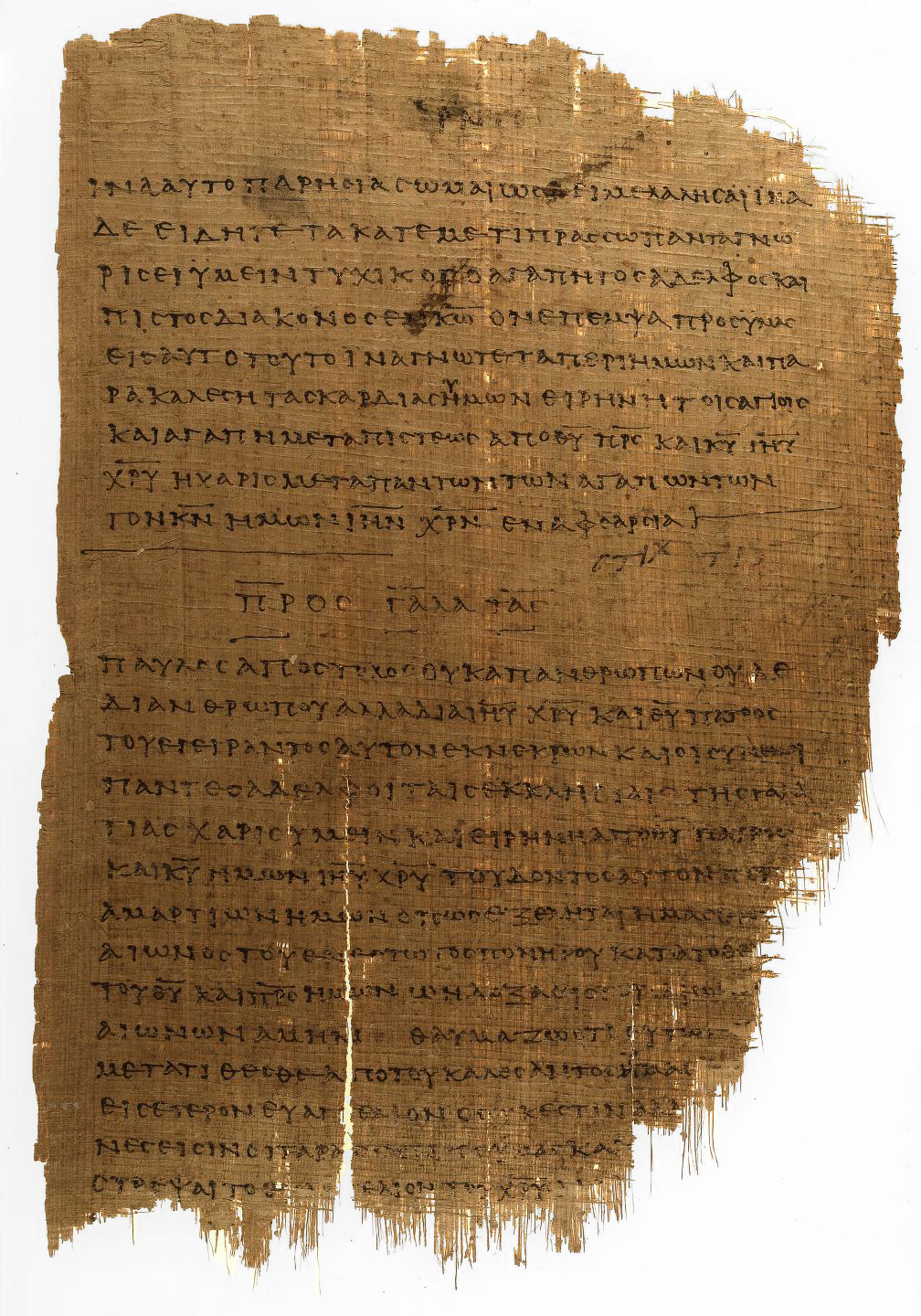|
Uncial 0176
Uncial 0176 (in the Gregory-Aland numbering), is a Greek uncial manuscript of the New Testament, dated paleographically to the 4th century (or 5th). Description The codex contains a small part of the Epistle to the Galatians (3:16-25), on one parchment leaf (12 cm by 7 cm). It is written in one column per page, 22 lines per page, in a small uncial letters. The Greek text of this codex is Byzantine, but Aland placed it in Category III. Currently it is dated by the INTF to the 4th or 5th century. It was examined by Guglielmo Cavallo.G. Cavallo, ''Richerche sulla maiuscola biblica'', Firenze: Le Monnier 1967, p. 115. The codex currently is housed at the Laurentian Library (PSI 251) in Florence. Textual Variants * 3:18a It reads ОөПҖОұОҪОіОөО»О№ОұПӮ rather than the usual reading ОөПҖОұОіОіОөО»О№ОұПӮ. * 3:18b It reads ОәОөПҮОұПҒО№ПғП„Оө rather than the usual reading of ОәОөПҮОұПҒО№ПғП„ОұО№. * 3:22 It reads ПғП…ОҪОөОәО»О№ПғОөОҪ rather than the usual reading of ПғП…ОҪОөО ... [...More Info...] [...Related Items...] OR: [Wikipedia] [Google] [Baidu] |
Epistle To The Galatians
The Epistle to the Galatians is the ninth book of the New Testament. It is a letter from Paul the Apostle to a number of Early Christian communities in Galatia. Scholars have suggested that this is either the Roman province of Galatia in southern Anatolia, or a large region defined by an ethnic group of Celtic people in central Anatolia. The language the letter was originally written in was Koine Greek and later translated into other languages. In this letter, Paul is principally concerned with the controversy surrounding gentile Christians and the Mosaic Law during the Apostolic Age. Paul argues that the gentile Galatians do not need to adhere to the tenets of the Mosaic Law, particularly religious male circumcision, by contextualizing the role of the law in light of the revelation of Christ. The Epistle to the Galatians has exerted enormous influence on the history of Christianity, the development of Christian theology, and the study of the Apostle Paul. The central disp ... [...More Info...] [...Related Items...] OR: [Wikipedia] [Google] [Baidu] |
